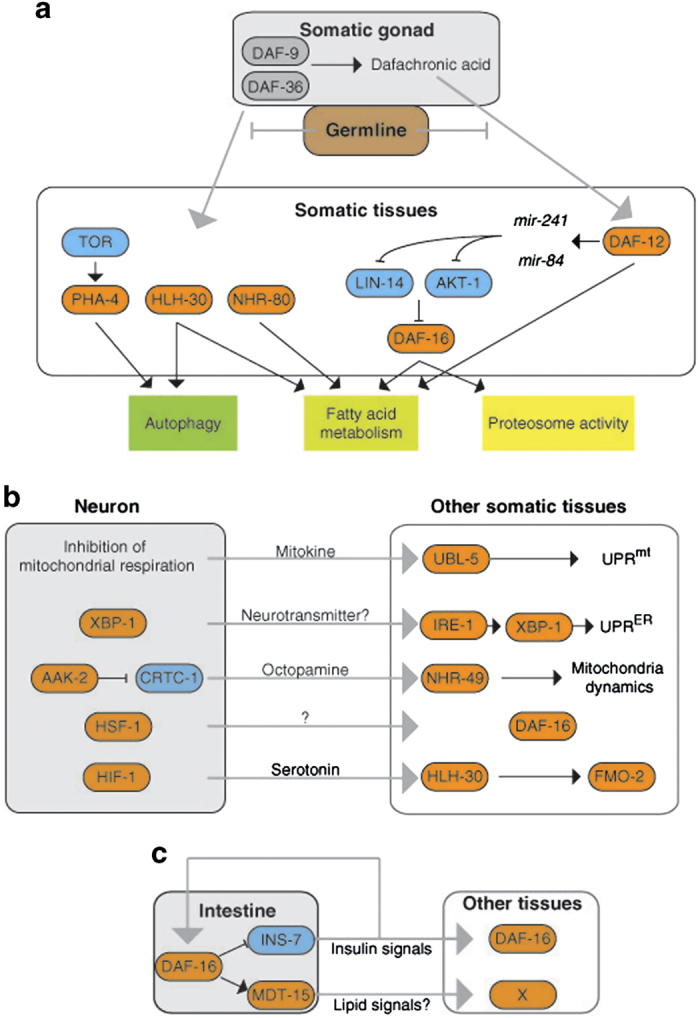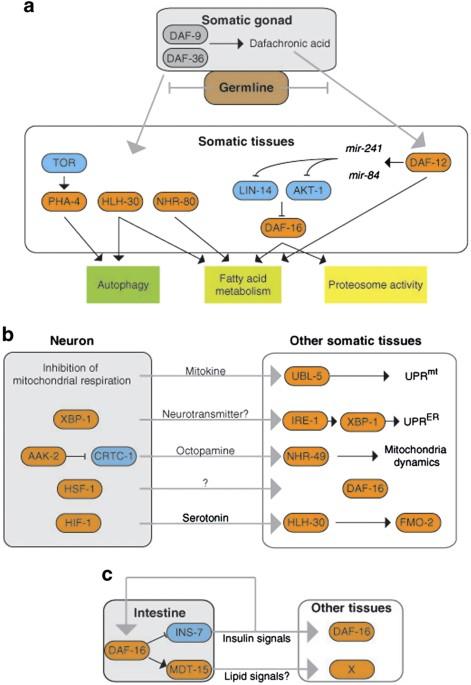Lifespan-regulating genes in C. elegans
IF 4.1
Q2 GERIATRICS & GERONTOLOGY
引用次数: 113
Abstract
The molecular mechanisms underlying the aging process have garnered much attention in recent decades because aging is the most significant risk factor for many chronic diseases such as type 2 diabetes and cancer. Until recently, the aging process was not considered to be an actively regulated process; therefore, discovering that the insulin/insulin-like growth factor-1 signaling pathway is a lifespan-regulating genetic pathway in Caenorhabditis elegans was a major breakthrough that changed our understanding of the aging process. Currently, it is thought that animal lifespans are influenced by genetic and environmental factors. The genes involved in lifespan regulation are often associated with major signaling pathways that link the rate of aging to environmental factors. Although many of the major mechanisms governing the aging process have been identified from studies in short-lived model organisms such as yeasts, worms and flies, the same mechanisms are frequently observed in mammals, indicating that the genes and signaling pathways that regulate lifespan are highly conserved among different species. This review summarizes the lifespan-regulating genes, with a specific focus on studies in C. elegans.


秀丽隐杆线虫的寿命调节基因
近几十年来,衰老过程的分子机制备受关注,因为衰老是许多慢性疾病(如 2 型糖尿病和癌症)的最主要风险因素。直到最近,衰老过程还不被认为是一个主动调节的过程;因此,发现胰岛素/胰岛素样生长因子-1 信号通路是草履虫寿命调节遗传通路是一个重大突破,改变了我们对衰老过程的认识。目前,人们认为动物的寿命受遗传和环境因素的影响。参与寿命调控的基因通常与将衰老速度与环境因素联系起来的主要信号通路有关。尽管在酵母、蠕虫和苍蝇等短寿命模式生物体中的研究发现了许多衰老过程的主要机制,但在哺乳动物中也经常观察到相同的机制,这表明调控寿命的基因和信号通路在不同物种之间高度保守。本综述总结了调节寿命的基因,并特别关注对 elegans 的研究。
本文章由计算机程序翻译,如有差异,请以英文原文为准。
求助全文
约1分钟内获得全文
求助全文

 求助内容:
求助内容: 应助结果提醒方式:
应助结果提醒方式:


